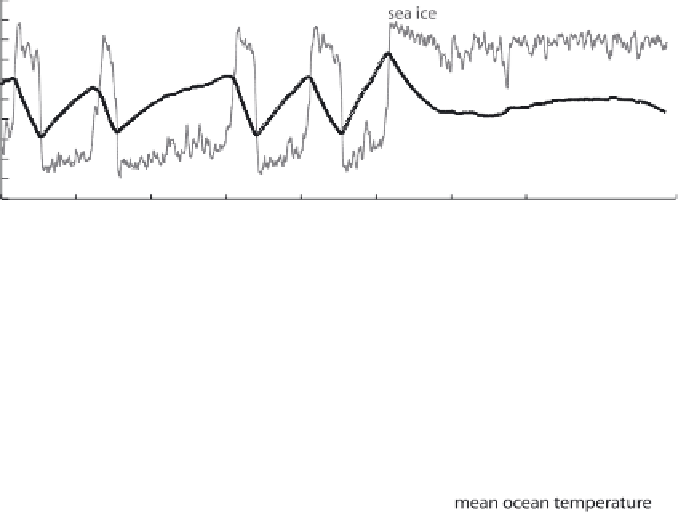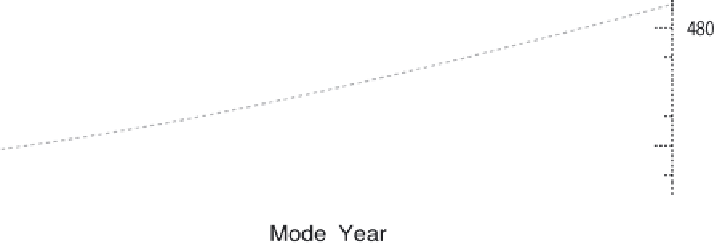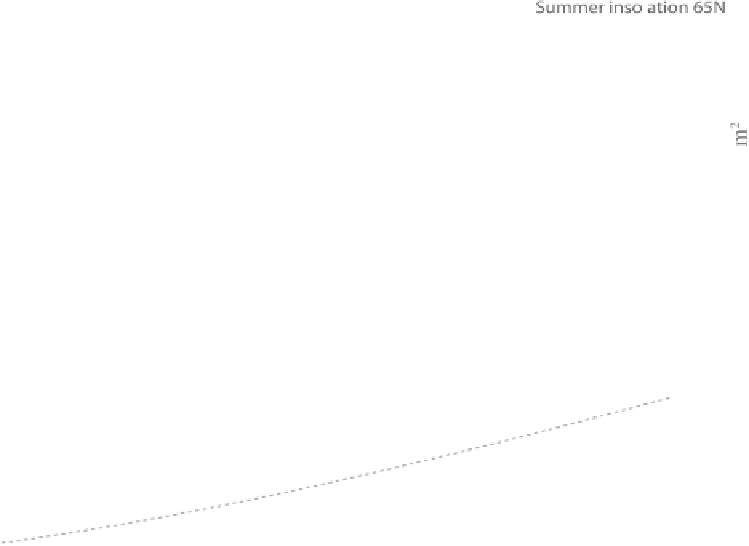Geoscience Reference
In-Depth Information
Figure 9.
Both SIO and ECBILT-CLIO produce consistent results for astronomically forced sea ice extent and mean ocean
temperature. The results are also fully consistent with the Langevin results of Figure 3a in spite of the great difference
among models. Note that mean ocean temperature increases as sea ice extent is at its maximum (around 15 million km
2
)
and forces sea ice to retreat as it reaches a threshold. Both models show ocean cooling following sea ice retreat. Though
both EBILT-CLIO and SIO could certainly be wrong, the similarities between the two modeling results and the fact that the
data waveforms (Figure 8) are square and triangular, just as in the models, and that the relative phases of sea ice extent and
mean ocean temperatures are similar to observations of SST and deep ocean temperature argues for the models to have
captured some of the actual physics of the process. If so, it could be surmised that the insolation forcing must be a major
influence in creating the timing and duration of the D-O through amplitude and frequency modulation of sea ice feedback
and a ~1.5 kyr carrier, as Figures 3, 6, and 7 also suggest. In ECBILT-CLIO, the periodicity is controlled by the boundary
conditions (provided no changes in default parameters are made), and in SIO, the periodicity is prescribed to fit that of
ECBILT-CLIO.
circulation would come to a halt. Some authors [e.g.,
Wunsch, 2002; Rahmstorf, 2006] point out that vertical tur-
bulent mixing plays an essential role in transporting heat to
and from the deep ocean, for example, by lowering deep
water density and keeping surface water in the high latitudes
denser than the water in the deep ocean. If the vertical eddy
diffusivity in the ocean is chosen to be large enough (~10
4
m
2
s
1
, say), models will be very effective in mixing the
ocean and transporting heat vertically, but the actual mecha-
nisms through which this happens and realistic values of the
diffusivity are incompletely known [Huybers and Wunsch,
2010].
6. DISCUSSION
Figure 9 helps to identify at least two types of abrupt
events that consistently appear in SIO and ECBILT-CLIO:
internal, likely caused by the convection/diffusion processes
in the ocean just described, and external, driven by the actual
insolation, as it forces the climate system through thresholds.
The time series in Figure 9 show both types. The figure
illustrates that even the relatively slow increase in summer
insolation (~0.0065 W yr
1
) can drastically alter the climate
system as it forces it to cross a threshold, the timing of which
varies with mean climate state (sooner for the warmer































































Search WWH ::

Custom Search